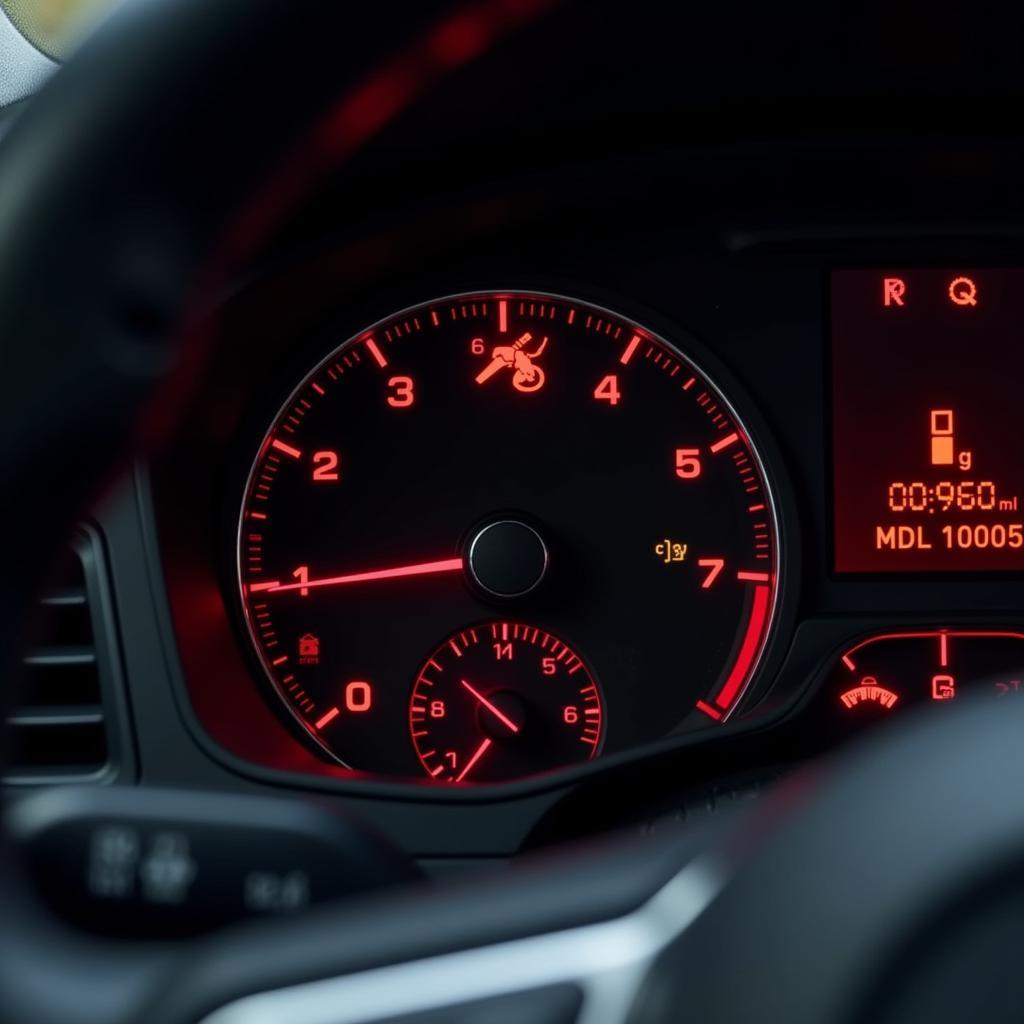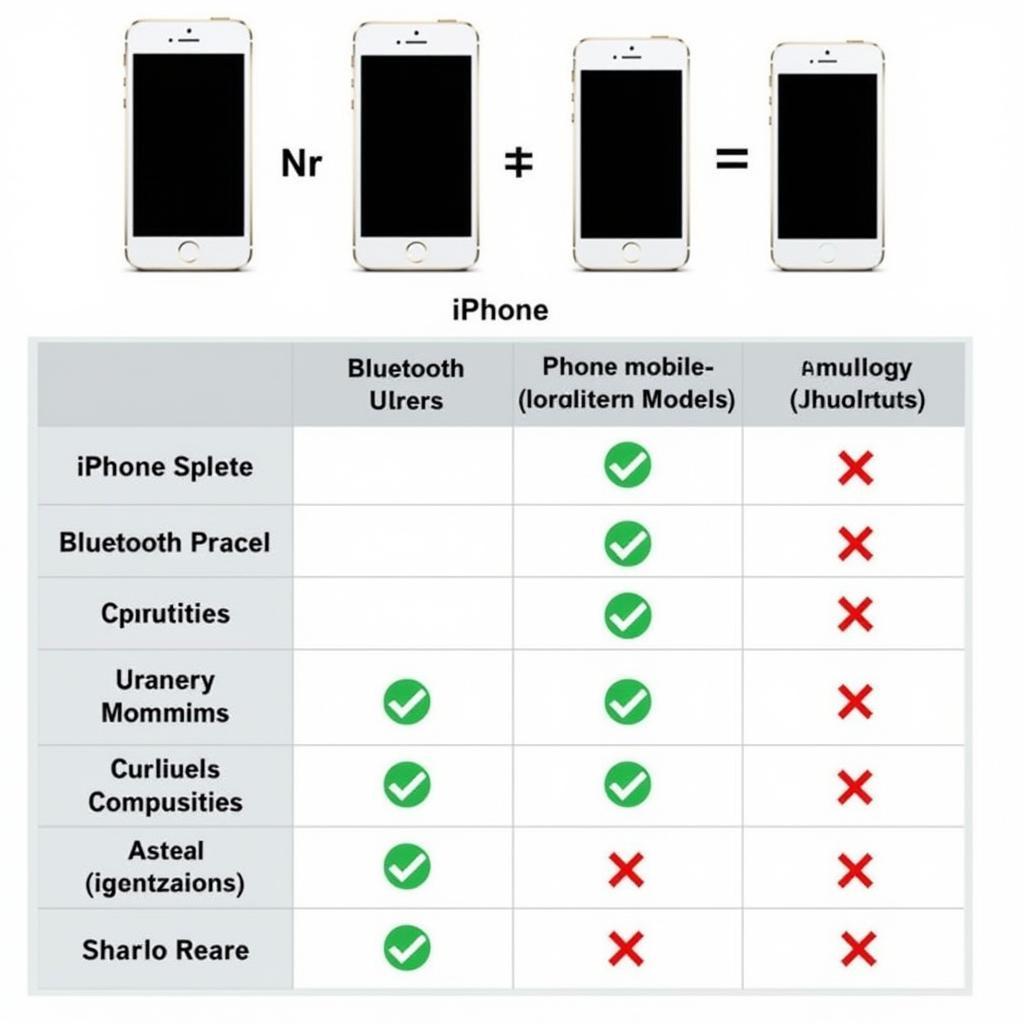The dreaded volkswagen brake pad warning light. It illuminates your dashboard, a small symbol of potential braking issues. Understanding this light and knowing how to address it is crucial for your safety and the longevity of your Volkswagen. This article will guide you through everything you need to know about the volkswagen brake pad warning light, from diagnosis to solutions.
 Volkswagen Brake Pad Warning Light on Dashboard
Volkswagen Brake Pad Warning Light on Dashboard
What Does the Volkswagen Brake Pad Warning Light Mean?
Simply put, the volkswagen brake pad warning light indicates your brake pads are nearing the end of their lifespan. It’s a crucial warning, signaling the need for inspection and likely replacement. Ignoring this warning can lead to costly repairs and compromised safety.
How Do Brake Pads Work?
Your brake pads are essential components of your braking system. They create friction against the brake rotors, slowing or stopping your vehicle. Over time, this friction wears down the pads. The warning light is triggered by a sensor embedded within the brake pad material. When the pad wears down to a certain point, the sensor contacts the rotor, completing a circuit and illuminating the warning light.
Diagnosing the Volkswagen Brake Pad Warning Light
While the most common cause is worn brake pads, the volkswagen brake pads warning light can sometimes be triggered by other issues. Low brake fluid, a faulty brake pad wear sensor, or even issues with the ABS (Anti-lock Braking System) can be culprits.
Checking Your Brake Pads
Visually inspect your brake pads. Look through the spaces in your wheels. If the pad material is less than ¼ inch thick, it’s time for replacements. You might also hear a squealing or grinding sound when braking – another telltale sign of worn pads.
Checking Brake Fluid
Low brake fluid can also trigger the warning light. Check the brake fluid reservoir under the hood. Ensure the fluid level is within the minimum and maximum markers. If it’s low, top it off with the correct brake fluid specified in your owner’s manual. However, consistently low brake fluid indicates a leak, requiring immediate professional attention.
Fixing the Volkswagen Brake Pad Warning Light
Once you’ve diagnosed the problem, the solution depends on the cause.
Replacing Brake Pads
If your brake pads are worn, replace them. While it’s a job some DIY enthusiasts tackle, it requires specific tools and knowledge. For optimal safety and performance, consider having a qualified mechanic perform the replacement, particularly if you’re dealing with newer Volkswagens equipped with electronic parking brakes. Don’t delay this repair; driving with worn brake pads is dangerous.
Addressing Other Issues
If the issue isn’t worn brake pads, further diagnostics are necessary. A professional mechanic can use diagnostic tools to pinpoint the problem, whether it’s a faulty sensor, low brake fluid, or an ABS issue.
Preventing Future Volkswagen Brake Pad Warning Light Issues
Regular brake inspections are key to preventing future problems. Check your brake pads every 10,000-20,000 miles or as recommended in your owner’s manual. Also, ensure you’re using high-quality brake pads designed for your specific Volkswagen model.
“Preventive maintenance is always the best approach. Regular brake inspections can save you money and headaches down the road,” advises John Smith, a certified Volkswagen technician with over 20 years of experience. “Don’t wait for the volkswagen karmann ghia brake pad warning light to illuminate before addressing your brakes.”
Conclusion
The volkswagen golf brake pad warning light is a serious warning that shouldn’t be ignored. Addressing it promptly ensures your safety and protects your Volkswagen from further damage. While worn brake pads are the most common cause, don’t rule out other possibilities. If you’re unsure about diagnosing or fixing the issue, consult a qualified mechanic. Remember, a well-maintained braking system is critical for a safe and enjoyable driving experience.
FAQ
- What does the volkswagen warning lights brake pads look like? It’s typically a circle with parentheses on either side, enclosing an exclamation mark. Consult your owner’s manual for the specific symbol for your model.
- Can I drive with the brake pad warning light on? It’s not recommended. Driving with worn brake pads compromises your stopping power and can damage your rotors.
- How much does it cost to replace brake pads? The cost varies depending on your Volkswagen model and the type of brake pads used. Expect to pay between $100 and $300 per axle.
- How often should I replace my brake pads? It depends on your driving habits and conditions. Generally, every 20,000-40,000 miles is a good guideline.
- What are the signs of worn brake pads besides the warning light? Squealing or grinding noises when braking, a spongy brake pedal, and vibrations when braking are common signs.
- Can I replace my Volkswagen brake pads myself? While possible, it requires mechanical knowledge and specialized tools. For safety, consider having a professional do the job, especially with modern Volkswagens with electronic parking brakes.
- Why is my brake pad warning light on even after replacing the pads? It could be a faulty sensor, low brake fluid, or another issue. Volkswagen karman ghia brake pad warning light issues can sometimes be tricky. Consult a qualified mechanic for diagnosis.


